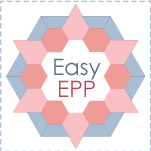Armchair Caddy Hugs n Kisses free Stitching Angel project
'
Well here it is girls, the first free project in the Stitchers' Angel swap project. Yes it is late, but it is still Monday the 18th here just. I am still busy chasing and matching angels and getting your assignments out. If you havent gotten yours yet it is still coming, never fear. If you dont get it tonight then I am possibly waiting on your to confirm so send me an email. sorry about the underline *** new typepad..... cant get it off
Armchair caddy
A stitchers’ Angel project from the heart of Hugs 'n Kisses.
Stitch this handy armchair caddy to hold your needles and pins, threads and scissors all within reach on your stitching chair each night.
Requirements
9” x width main feature fabric
18” x 9” batting
8” x 10” white or stitchery background fabric
8” x 12” pocket lining fabric
8” x 10” coordinating scallop fabric
2” x width binding fabric
3-4 Threads to match chosen fabrics
Soft mechanical lead pencil or blue water erasable pen
General sewing and quilting supplies
Cotton sewing thread
#7/8 crewel needle/appliqué needle
6-8” embroidery hoop
Light box or window light source
Preparation and cutting
Download the PDF templates, print them and cut out each one. Please choose your country or printer paper size and select the appropriate download.
Download armchaircaddytemplates.pdf A3
Download armchaircaddytemplatesA4.pdf A4
Download armchaircaddytemplatesletter.pdf US Letter size
1. Cut two piece main fabric 9” x 18”
2. Cut one piece batting 9” x 18”
3. Cut two pocket pieces (B) from white or stitchery fabric
4. Cut two pocket lining pieces (D) from contrasting fabric.
5. Trace two pocket scallops (C) onto right side of coordinating fabric
6. Cut one strip white or stitchery fabric 1 ¼” x 6”
7. Cut two coordinating fabric strips 2 7/8” x 6”
8. Cut approximately 100cm/40” x 2” wide coordinating fabric on the bias for binding
Join using bias joins.
Construction
Layer main fabric piece (1) right side down, batting (3) and main fabric piece (1) right side up. Baste or pin. Using a walking foot free machine quilt through all layers. Place Template A on top and trim around outside edges using a rotary cutter or mark with pencil and trim with scissors.
Join two fabric strips (7) to either side of your white or stitchery fabric (6) strip using a ¼” seam. Press seams towards the coordinating fabrics.
Cut out scallop pieces leaving a small ¼” seam allowance around the top scalloped edge. Lay or glue (using Roxanne’s basting glue) in position on top of pocket pieces (3). Using a small appliqué needle and matching cotton thread turn under edge and appliqué into position. (if you have another preferred method of appliqué feel free to adapt and use that). Clip into corners where necessary when appliquéing.
Tracing stitchery
Download your design sheet. Lay your design sheet on a light box or window light source. Trace the pincushion design onto the centre white or stitchery fabric in the pieced panel. You can just use a dot for the centre of each flower and follow the design sheet when stitching. Next lay the pocket piece and trace the design emerging above the scallops. Repeat for the other piece.
Stitching
Place into a 6-8 “embroidery hoop and stitch on all drawn lines. Stitch a lazy daisy for each flower dot and place a French knot in the centre. A lazy daisy or detached chain stitch is also used for the leaves. The rest of the design is stitched using backstitch.
I have not given thread colours as you need to match your colours to the fabric you have chosen. Choose a green for stems and leaves and 2-3 colours for your flowers.
Once all stitching is finished press well. Lay your pocket pieces on top of the pocket lining with the extra fabric extending at the top. Fold and press the extra in to meet the pocket, then again to form a casing. Edge stitch using a matching thread .
.
Fold pincushion panel in half right sides together and stitch down long edge. Turn right side through. Insert small amount of fibre fill or wool stuffing and pin into position onto your backing piece ensuring you centre evenly. Lay a pocket piece at each end. Pin.
Baste all pieces with a long machine stitch around the outside edge .
.
Fold your binding strip in half along the length wrong sides together and press. We are using a double binding like you would use for a quilt. Beginning along one side and leaving a 4” tail stitch to the top or right side of your caddy. A walking foot on your machine may make this easier.
Take care to ease the binding around the corners and don’t pull it too tightly around the curves. When you almost reach your starting point stop, match, cut and join the two ends. Continue stitching the gap
.
Turn the binding to the back and slip stitch it down using a matching thread.
Your caddy is complete, lay on the arm of your stitching chair for your needles, threads, pins and scissors so they are all in easy reach.
For a printable version download here.
Download armchair_caddy_instructions.pdf
Happy Stitching!
Hugs, Helen
'








Items 1 to 6 of 51 total